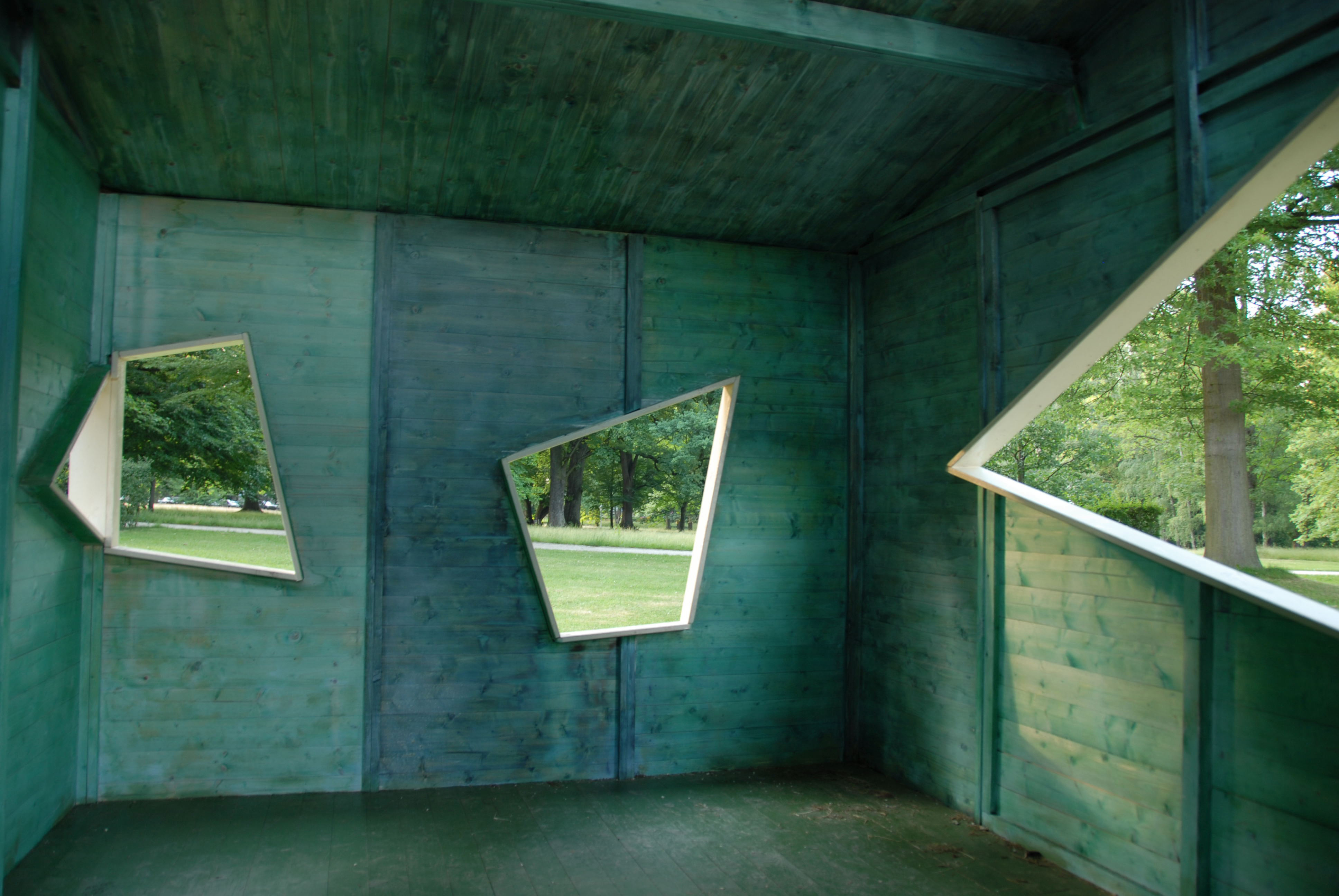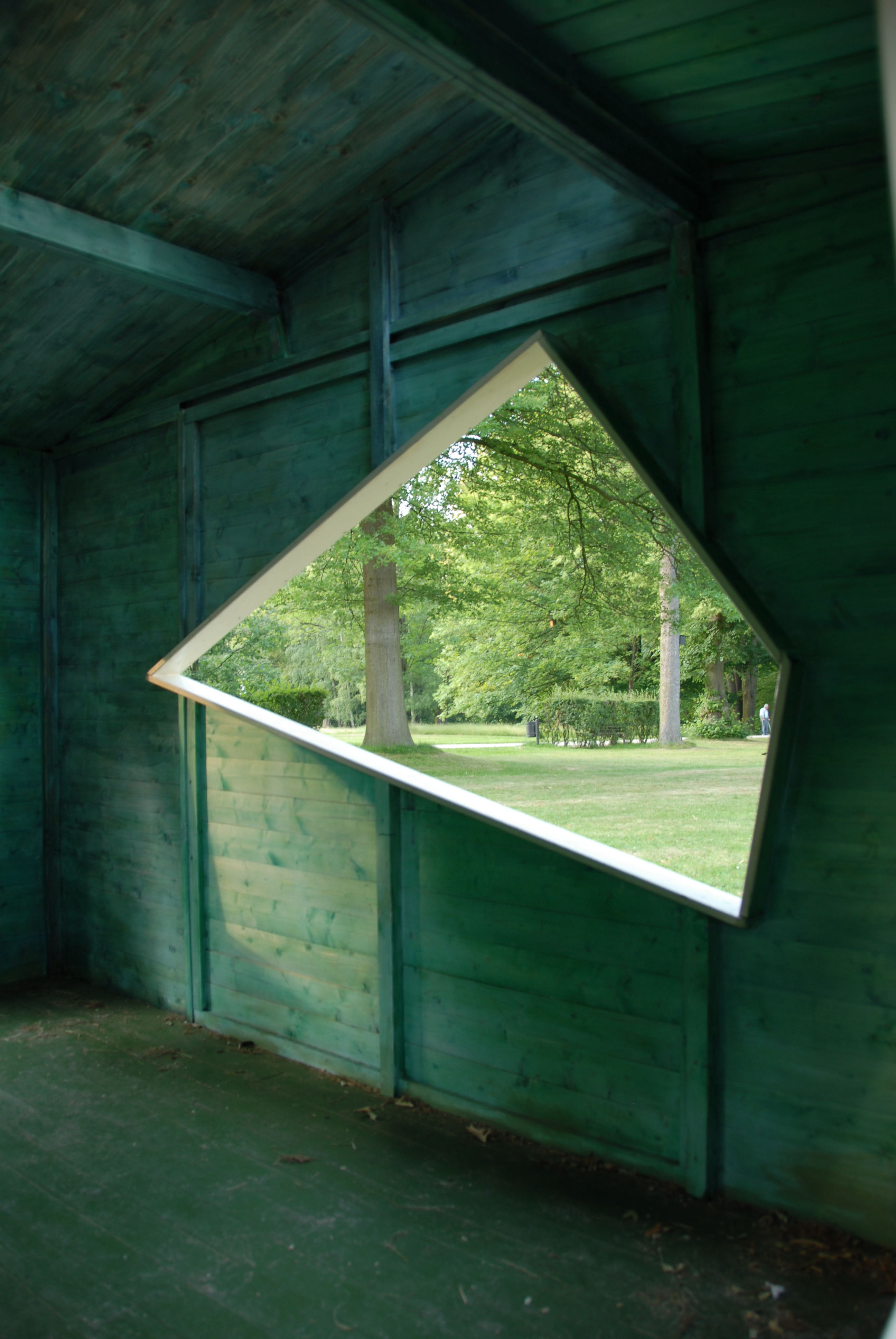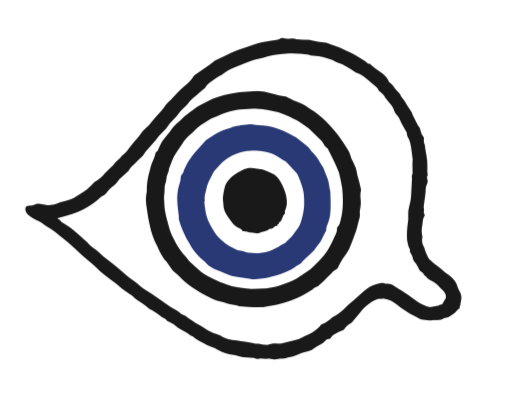





‘Schrebergartenhaus’, 2008
Painted wood, customised found object
2.5m x 2.5m x 2.5m
Skulpturen im Kurpark, Bad Homburg v.d. Hohe
Set within Bad Homburgs Kurpark, Schrebergartenhaus plays games with optics, access, inside and out. Asymmetric windows, delineated with white frames against a black exterior, present a playful contrast with green interior. Vertical beams that support the structure line, the trees and inhabitants becoming lost in the forest.
But what is the Schrebergarten? In the mid-1800s, Dr Daniel Gottlob Moritz Schreber, advocated the development of garden parcels for workers living in cramped city conditions, and helped develop the first gardens in Leipzig. While small allotment gardens flourish throughout Europe, the German variety is unique - orderly to the point of obsessiveness, the communities are governed by long lists of rules. While each collective has its own set of rules, the regulations include everything from the size of the garden hut, what types of plants may and may not be cultivated, and how often the paths in front of the gardens must be raked or mown. Schrebergartenhaus provides an asymmetric, upside-down, inside-out affront to these strict protocols.
Galerie Scheffel, Bad Homburg, in Zusammenarbeit mit dem Yorkshire Sculpture Park, West Bretton, Wakefield, UK
Magdalena Ababkanowicz, Stephan Balkenhol, Anthony Caro, Lynn Chadwick, May Cornet, Helen Escobedo, Alec Finley, Leo Fitzmaurice, Barry Flanagan, Laure Ford, Matt Franks, Elisabeth Frink, Kenny Hunter, Jorg Immenforff, Philip King, Peter Lundberg, Dhruva Mistry, Sophie Ryder, Ursula von Rydingsvard, Sarah Staton, Auke de Vries, Kwanho Yuh
